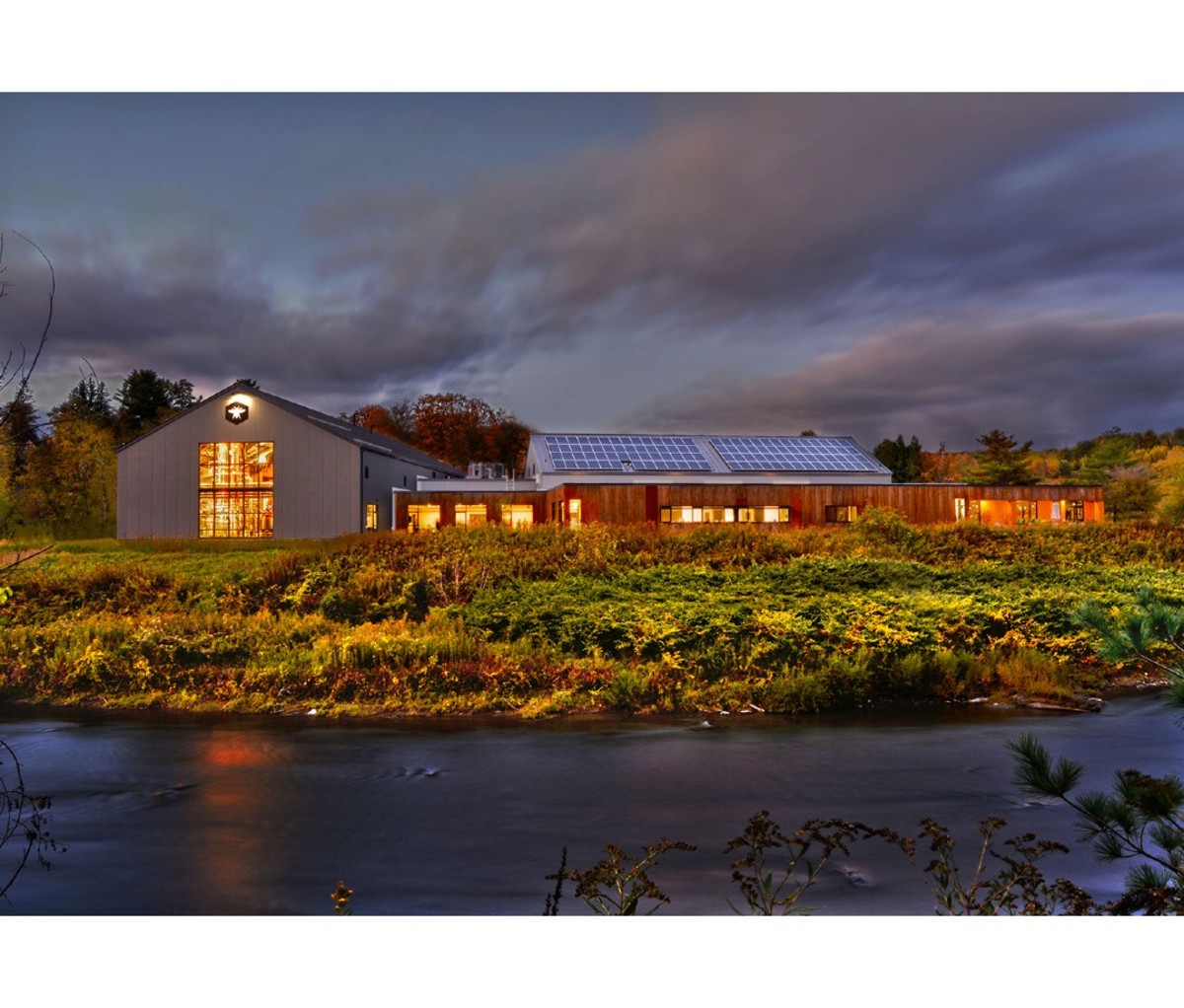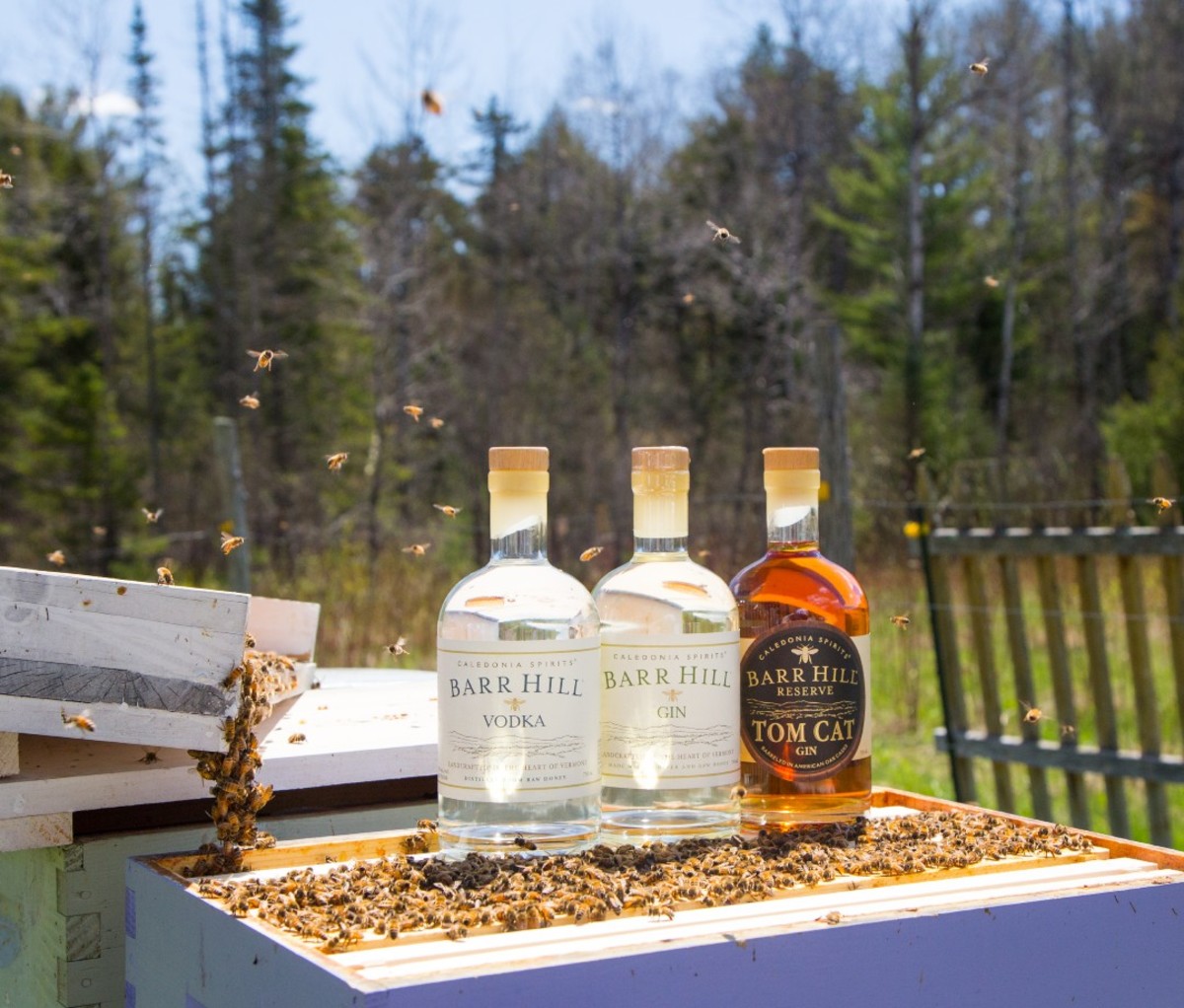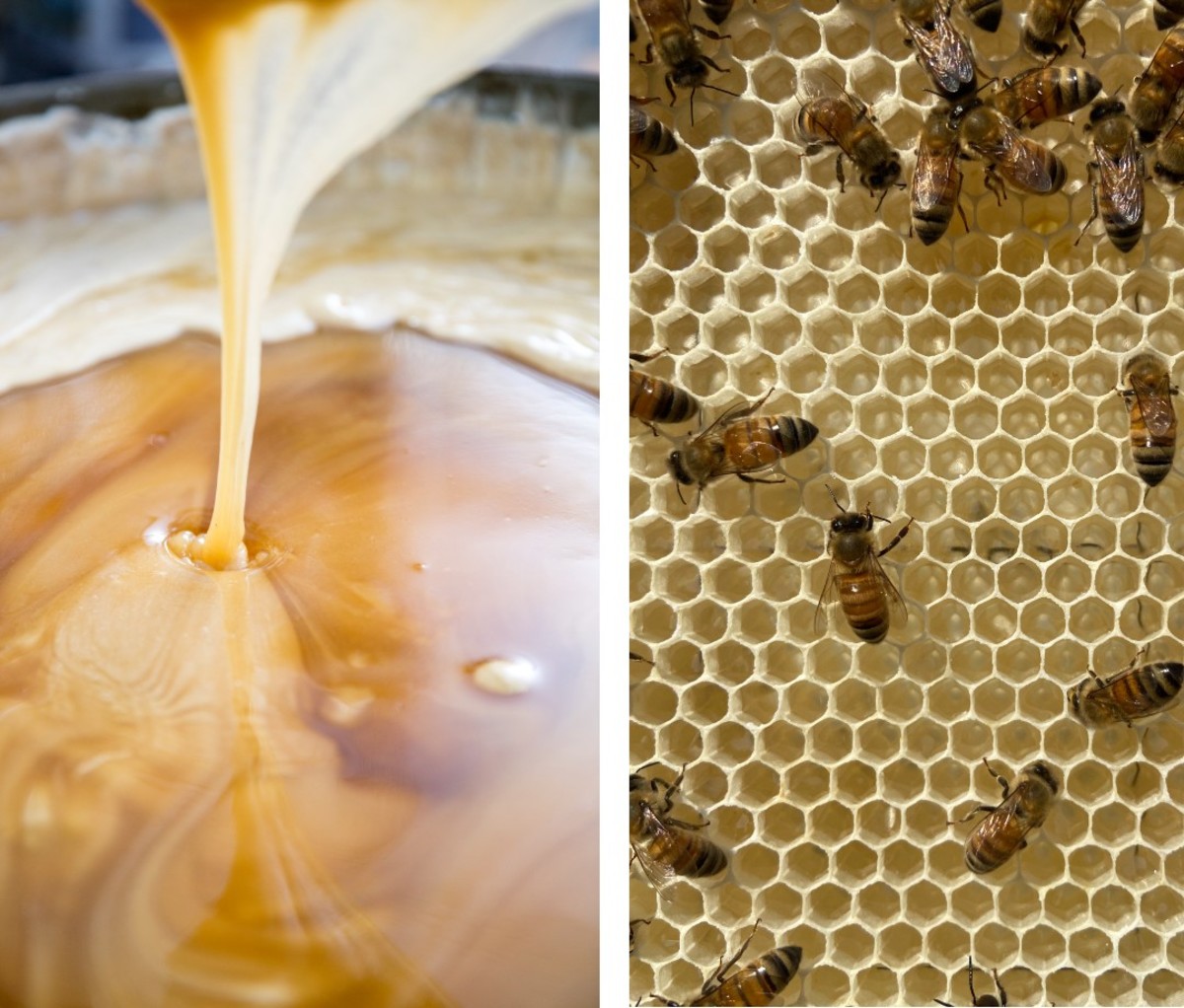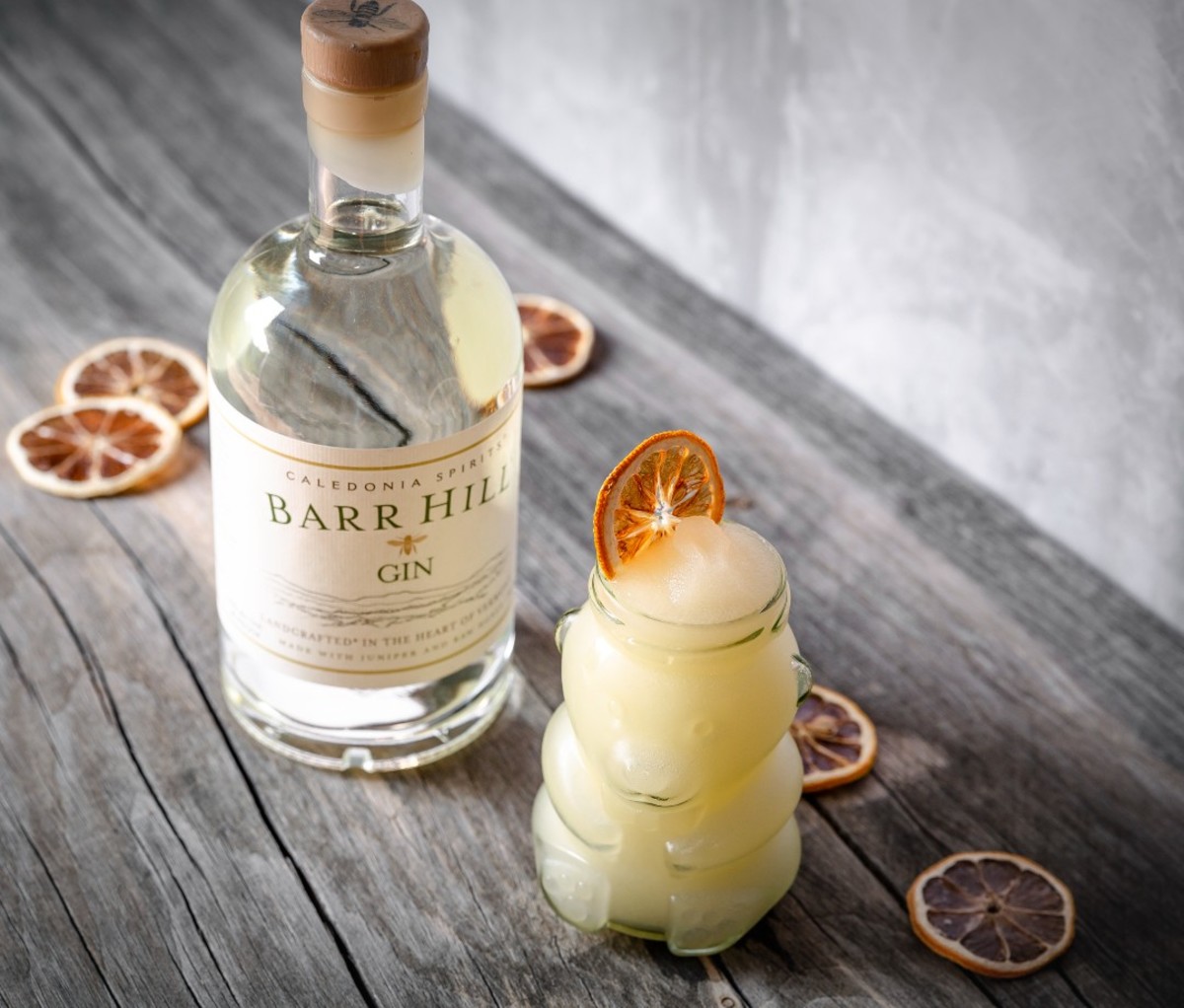There’s a reason you’ve been seeing the phrase ‘save the bees’ everywhere as of late. Across industries, companies and individuals are beginning to wake up to the distinct and terrifying possibility of losing one of our most important pollinators. Among them is the food and beverage biz, one of the most energy-intensive industries on the planet, which also stands to lose the most if endangered bees disappear.
So you know, about one third of all the food you eat is pollinated by honey bees, from blueberries and apples to almonds, squash, and broccoli. These fuzzy little insects are responsible for keeping 90 different food crops and nearly all flowering plants flourishing. That’s why it’s bad news that more than 40 percent of honeybee colonies in the U.S. were lost in 2019-20, and that since 2006, beekeepers have seen mounting cases of worker bees abandoning hives—a head-scratching phenomenon called colony collapse disorder.

Luckily, distilleries like Barr Hill, located in Montpelier, VT, are well aware of this threat. Bar Hill built its entire brand around the honey bee, with a mission to help protect the pollinators and maintain the local land that inspires and influences its craft.
“Barr Hill wouldn’t be able to do what it does without bees, the ultimate decision-makers when it comes to the flavors, essence, and botanicals within the honey—and, therefore, our gin and vodka,” says Ryan Christiansen, president and head distiller at Caledonia Spirits.
The brand was born thanks to the joint efforts of Christiansen, who began his distillation journey as a home brewer focused on local sourcing and the process of fermentation, and Todd Hardie, a longtime beekeeper and farmer, who refers to the bees as “angels of agriculture.”
At the time, Christiansen was using raw honey at his small production meadery. Upon meeting, they decided to collaborate on ways in which a distiller could impact the beverage industry while also supporting local agriculture, business, and bee populations.

A symbiotic relationship
Most people are familiar with the term ‘terroir’ as it relates to wine-making, but what about honey? Much like wine, mezcal, and even whiskey, honey is a unique reflection of its surrounding landscape. The difference is how those flavors come to be. For example, a sip of wine allows you to taste the soil where the grapes were planted, and a taste of Islay scotch whisky can reflect the salty air from the Irish coast.
Honey, on the other hand, is a melting pot of pollen collected by botanicals in that area. That amber elixir can take on a wide spectrum of flavor, which is why honey created by bees buzzing around orange groves is going to taste drastically different from clover or wildflower honey.
Barr Hill may have committed its business to the bees, but it’s a two-way relationship. Christiansen is very vocal about the ways the raw honey he infuses into their spirits makes all the difference in the way it tastes. While most gins rely on botanicals from far and wide to create a layered and balanced flavor, Bar Hill’s raw Vermont honey essentially does that job for them, along with the required juniper.

Cracking off the tops of Barr Hill’s honey barrels, what’s inside looks much different from your typical plastic honey bears found at the grocery store. Thick and viscous, it’s akin to cream-top milk, with a nutrient dense, bubbling layer of marbled honey foam made from leftover wax, propolis, and more. Most commercially sold honey is pasteurized to make it smooth-looking and squeezable, but the process removes the lion’s share of nutrients and distinct flavors, which is why the distillery uses only raw product.
“The distillery is a toolbox and the beehive is an incredible tool that gives us access to flavor we wouldn’t have without bees,” says Christiansen. “It’s more than that creamy viscosity of raw honey. There are trace botanicals, and you get all sorts of citrus and floral flavors that distillers strive to achieve.”
Distilled in a custom 300-gallon botanical extraction still named Phyllis (each of Bar Hill’s stills are named after the team’s grandmothers), the distillery’s gin contains subtle sweet notes from its signature ingredient, along with hints of clover, alfalfa, and goldenrod. Since the distillery sources its raw honey from beekeepers within a 250-mile radius of Montpelier, it creates a natural snapshot of the region’s botanicals. To provide context of scale, Barr Hill goes through over 150,000 pounds of the sweet stuff each year.
Barr Hill is also on a mission to step away from vodka’s traditional mark of excellence—flavorlessness. Rather than shy away from taste entirely, each bottle of its vodka is distilled anywhere from three to four pounds of raw honey, giving it a subtly sweet flavor and a uniquely satisfying mouthfeel.
That might sound like a lot, which is just one of the reasons why each year Bar Hill plants acres of habitat designed to keep the bee population robust. Last year, Barr Hill planted 200,000 square feet of habitat.

Protecting (and planting) for pollinators
Besides their work with local farmers and beekeepers, Barr Hill has hosted an annual Bee’s Knees Week since 2016, a charitable initiative that both celebrates the Prohibition Era Bee’s Knees Cocktail and underwrites habitat creation for endangered pollinators.
This week (until October 2), you can either order a Bee’s Knees Cocktail at a participating bar or make one at home. The important thing is to share the photo on social media. For every photo posted, Barr Hill partners with one of several non-profit organizations located throughout the U.S. to plant 10 square feet of pollinator habitat—an initiative that’s especially important in an era where honeybees face colony collapse disorder.
“It’s our responsibility to offset our carbon footprint as much as possible,” says Christiansen. “We must invest in rebuilding and embracing regenerative practices. We strive to leave the land and the rivers better than we found them…to leave our communities stronger, our pollinator populations healthier, and our local farms more vibrant.”
Barr Hill is also working with Licensed to Distill, the world’s largest online community of bartenders and cocktail lovers, to start a conversation that supports apiaries and the country’s top bartenders, who are guided by local beekeepers on how they can work directly with farmers and support the bees through the use of honey in their craft.
The collaboration comes in the form of a digital video series, with each episode exploring the ways bees unlock terroir from flowering plants in the local ecosystem and collect that flavor into honey, which can then be used to make great-tasting cocktails. You can now stream the series on YouTube.
from Men's Journal https://ift.tt/Nk1bRdZ






0 comments